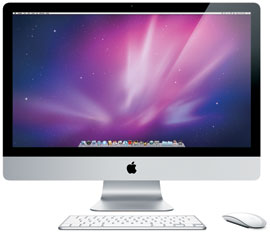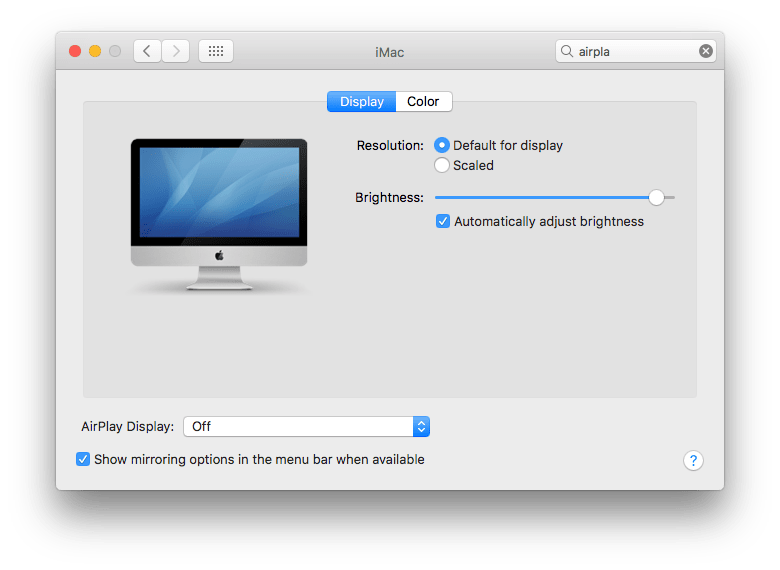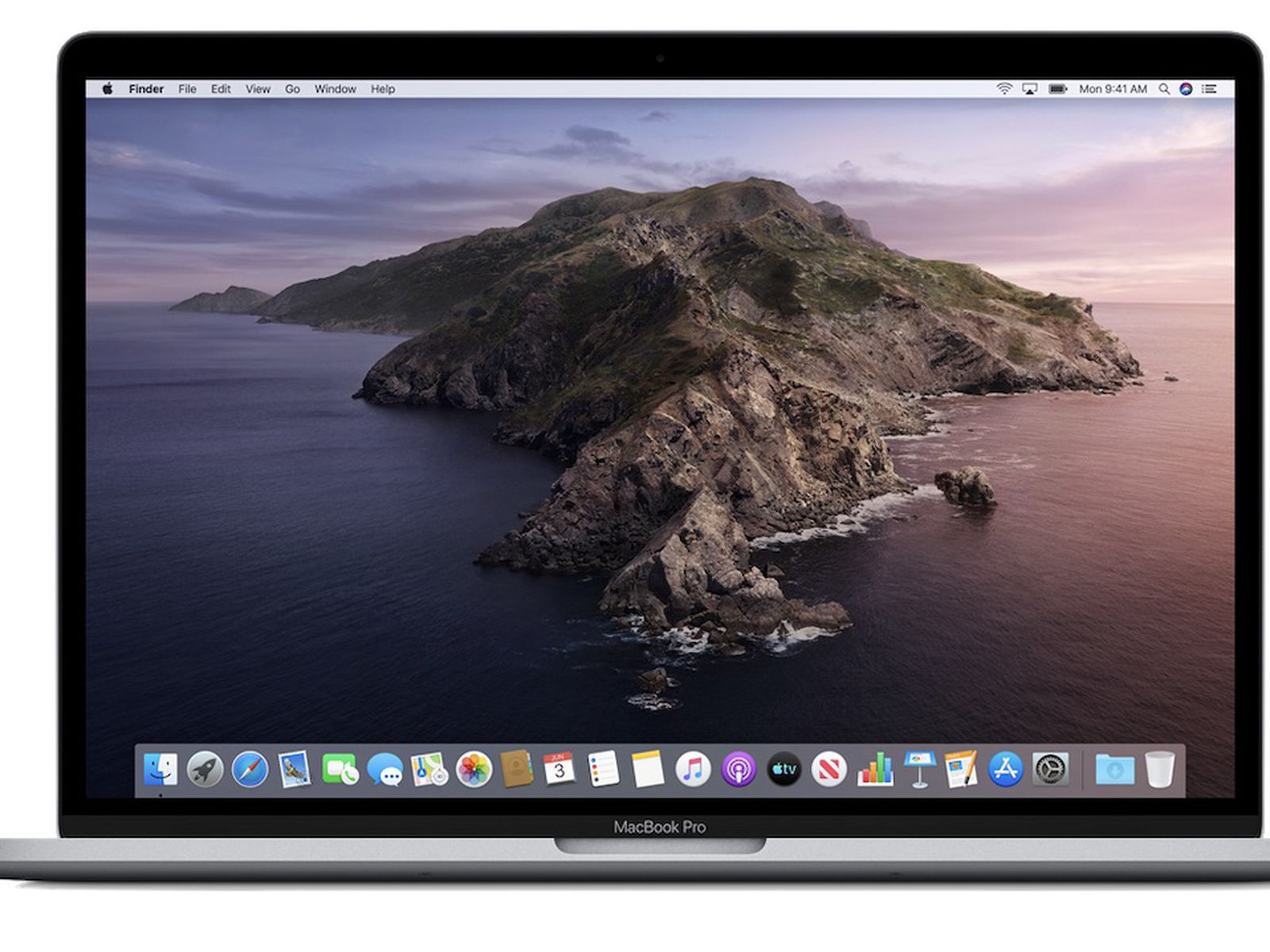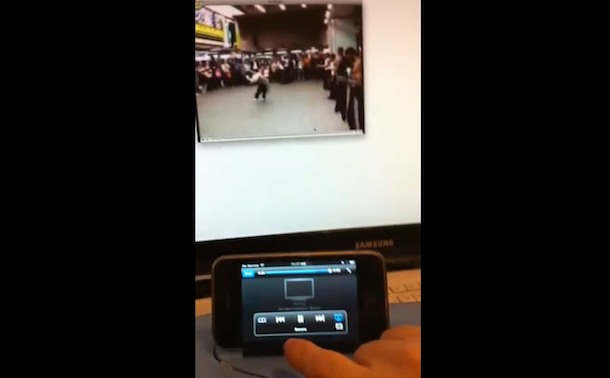AirPlay Mirroring is a fantastic feature of iOS on the iPad. It lets you mirror your iPad screen, and everything that you do on it, to an Apple TV or a Mac computer. This is hugely useful when doing presentations and demos, creating screencasts or videos, or just enjoying your iPad photos or videos or games on a bigger screen.
Enable and Disable AirPlay on Mac. Turning AirPlay on and off on Apple devices is pretty easy and it can be enabled as the following on your Mac. Click on the Apple logo at the top-left corner of your screen and select System Preferences. On the following screen, click on the option that says Displays. Nov 10, 2014 It turns out that the reader’s Macbook Pro is a mid-2010 (#6 above applies), so Airplay is out. Here’s two low-cost alternatives: 1. Buy a cable adapter with cable long enough to reach from your seat to the TV’s connectors. TVs usually have either HDMI, VGA or DVI input jacks, and the Macbook Pro has a Mini DisplayPort output jack. Memory available to Mac OS X may vary depending on graphics needs. Minimum graphics memory usage is 256MB. 1GB = 1 billion bytes; actual formatted capacity less. Testing conducted by Apple in April 2010 using preproduction 2.4GHz Intel Core 2 Duo-based MacBook units. Battery life depends on configuration and use. Stream video from your Mac Connect your Mac to the same Wi-Fi network as your Apple TV or AirPlay 2-compatible smart TV. On your Mac, open the app or website that you want to stream video from. In the video playback controls, click.
And it’s incredibly easy to use as long as you have the right setup. Here’s a quick rundown of what’s needed and how to use AirPlay Mirroring on the iPad:
Install Airplay On Mac
Requirements:
— An iPad 2 or later, running iOS 5 or later.
— If you want to mirror to Apple TV: An 2nd gen or 3rd gen Apple TV running software version 5 or later.

— If you want to mirror to a Mac: OS X Mountain Lion, a supported Mac, and an app to support mirroring.. Supported Macs are:
- iMac (Mid 2011 or newer)
- Mac mini (Mid 2011 or newer)
- MacBook Air (Mid 2011 or newer)
- MacBook Pro (Early 2011 or newer)
Two apps that enable mirroring to a Mac from an iPad are Reflector and Air Server. Both offer free trials, are available for $14.99 for a single user license, and have other licensing packages for multiple users. Both these apps also work on Windows PCs.
— A WiFi network. All devices taking part in the AirPlay Mirroring must be on the same local WiFi network.

How To Turn On AirPlay Mirroring:
— Bring up the MultiTasking Bar on the iPad. Do this by double-tapping the Home button or by using a swipe up gesture from the bottom bezel, if you have enabled multitasking gestures in Settings.
— Then swipe on the recently used apps list once or twice from left to right until you see the AirPlay Mirroring icon.
— Tap on the AirPlay Mirroring icon. This will bring up a popover dialog showing you an entry for the iPad and any Apple TV or Mac that is available to mirror to on your WiFi network. Please note that on a Mac you will need to have either the Reflector or Air Server app open in order for it to be available to mirror to.
— Tap to select either the Apple TV or the Mac and tap to toggle the Mirroring button below the device name to On.
— To turn off mirroring you bring up the Multitasking Bar again, swipe left to right to reveal the AirPlay Mirroring icon (just as you did above), tap on the AirPlay Mirroring icon, and tap on the entry for the iPad.
Airplay For My Mac Mid 2010 Release
That’s it. This really is a superb feature that’s ever so easy to use.

Here's a little more info:
So why can’t older Macs support AirPlay Mirroring?
It comes down to hardware advantages of mid-2011 Macs, as they received Sandy Bridge i5/i7 chipsets that included separate dedicated hardware encoding for H.264. AppleInsiderexplains why older Macs can support AirPlay, but not AirPlay Mirroring:
These systems are the oldest machines capable of supporting AirPlay Mirroring because they are the first to deliver dedicated hardware encoding for H.264. Without a CPU capable of crunching this task using specialized hardware, earlier Macs simply can’t transmit video fast enough without a lot of heat and screaming fans.
Older Macs can already send video from iTunes to Apple TV via AirPlay, but they stop local playback while doing this. Mirroring requires the system to produce two video images, one driving the local display and one to be wirelessly delivered to the external screen.

AirPlay doesn’t just relay video from the computer (or iOS device) to Apple TV. It scales down the video to fit on an HDTV resolution, and has to convert the colorspace from the computer’s RGB to the native YUV that televisions use. Both tasks require a lot of processing resources, so without the extra hardware available on newer Macs, mirroring isn’t possible.

Users have noted the app AirParrot mimics AirPlay Mirroring on pre-2011 Macs with both video and audio. However, note that live video encoding is a hardware intensive task–so note your Mac will run very hot with the fans on full blast.
Dec 1, 2012 6:39 AM
